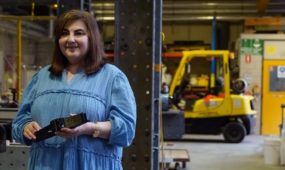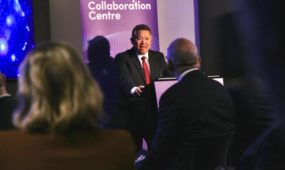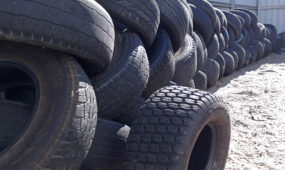Saving endangered species with SWINGER matchmaking program
Research & Development
A MATCHMAKING software has been developed to help save endangered species of fish by diversifying populations.

Sign up to receive notifications about new stories in this category.
Thank you for subscribing to story notifications.
SWINGER was developed by researchers at Flinders University in South Australia and uses a DNA-analysing algorithm to match-make endangered animals for captive breeding.
Popular online dating services such as Tinder and eHarmony use algorithms to help people find love by pairing users up with people of similar interests.
These algorithms work to increase the quantity and quality of matches each user receives.
The new DNA matchmaker works in a similar fashion but uses genetic fingerprints to pair fish with partners who are not closely related instead.
Program developer Jonathan Sandoval-Castillo said although the program had only been used to test fish, it was designed with the potential to help all endangered animals.
“We use the information we gather from the DNA to see how closely related animals are to each other and then are able to design the best matchup because genetic diversity is really important,” he said.
“Unlike other programs that use pedigree information, this allows you to pick female and male or polygamous groups as well – it is in this common situation where our algorithm thrives.”
Dr Sandoval-Castillo said although the program would be useful for aquaculture farms and zoos, one of the key features was the ability to analyse data on a wider scale by including wild animal populations.
SWINGER’s algorithm takes nuclear DNA microsatellites of two or more animals and then uses them to calculate any genetic similarities between them.
According to the World Wildlife Fund conservation group, mammal, bird, fish, amphibian and reptile populations have fallen by almost 60 per cent since 1970.
The first endangered species being saved using the SWINGER is a rare lineage of rainbowfish that is only found in the Running River in northern Queensland.
The Running River rainbowfish have golden-green bodies, bright red fins and distinctive black zigzag lines on their flanks. They are morphologically and genetically distinct from any other of type of rainbowfish.
Its population is beginning to disappear because of the illegal introduction of the eastern rainbowfish species Melanotaenia splendida.
Dr Sandoval-Castillo’s research team from Flinders University, alongside Dr Peter Unmack from the University of Canberra, formed 17 breeding groups of the Running River rainbowfish from wild-caught individuals.
They mapped the fish’s DNA and used the matchmaking algorithm of SWINGER to develop optimal breeding partners.
“The breeding pairs have been highly successful, producing thousands of fingerlings that we have begun releasing to the wild. It is still a work in progress, but it is looking positive,” Dr Unmack said.
“We and native fish aquarists continue to keep populations in captivity just in case but to truly preserve nature, we need to restore the fish in the wild.”
Dr Sandoval-Castillo and the Flinders team published a study titled SWINGER: a user-friendly computer program to establish captive breeding groups that minimize relatedness without pedigree information in the journal Molecular Ecology Resources last month.
The program is now freely available from the Molecular Ecology group’s webpage for the use of any conservation manager or biologist.
South Australia’s capital Adelaide has three long-standing public universities, Flinders University, University of South Australia and the University of Adelaide, each of which are consistently rated highly in the international higher education rankings.
Jump to next article



